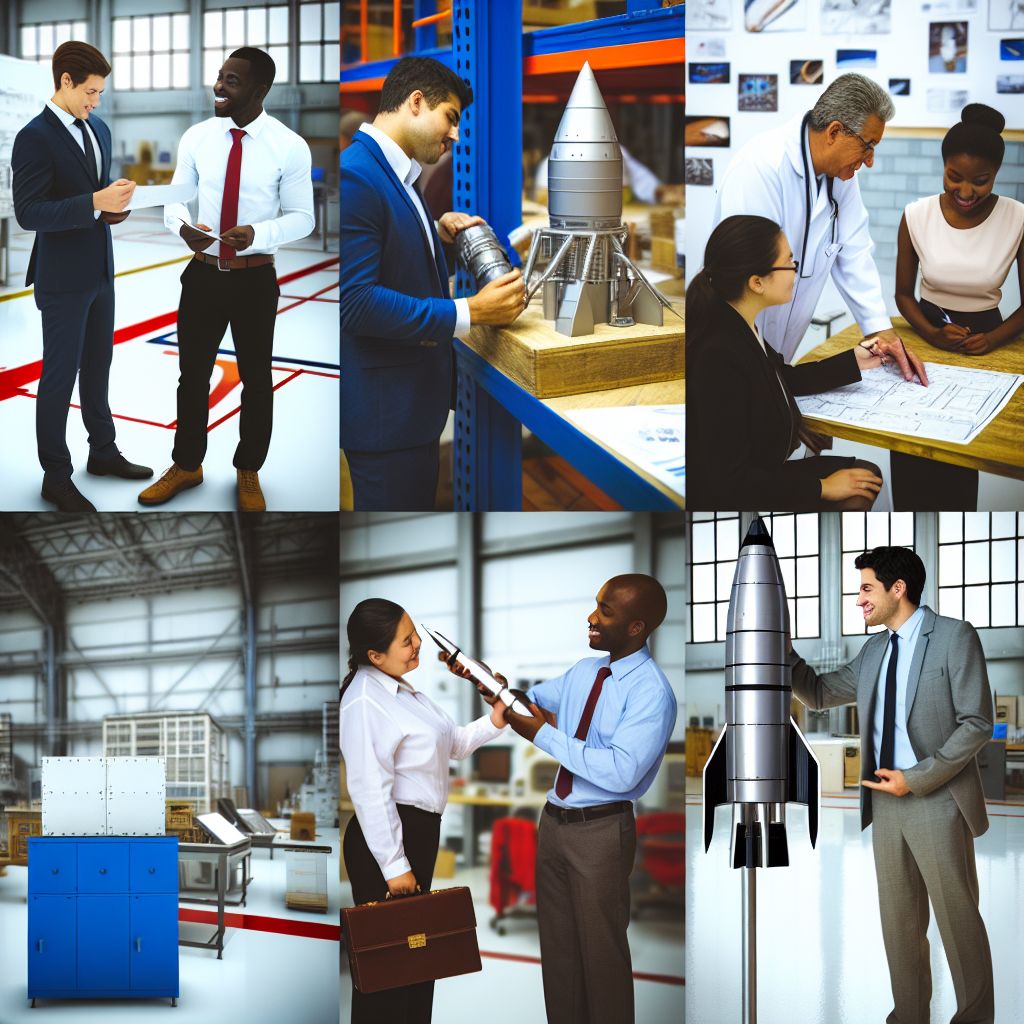In the Space industry context, aeronautical Engineering often overlaps with aerospace engineering, focusing on the design, Development, testing, and Production of Aircraft, Spacecraft, and related systems and components. However, strictly speaking, aeronautical engineering primarily concerns itself with the study and development of Technology related to the Atmosphere's Operation, including airplanes and helicopters. In the broader context of the space industry, professionals might apply aeronautical engineering principles to aspects of spacecraft design that interact with atmospheric conditions during Launch or re-entry phases, such as aerodynamics, thermal protection systems, and flight Mechanics.
Description

While aeronautical engineering traditionally deals with vehicles operating within Earth's atmosphere, its principles are crucial for certain aspects of space vehicle design and operation, especially for those phases of a mission involving atmospheric flight. This includes understanding the behavior of vehicles as they ascend through or return to the atmosphere, dealing with aerodynamic heating, optimizing flight trajectories for efficiency and safety, and designing vehicles that can withstand the mechanical stresses of launch and re-entry.
Application Areas
In the space industry, aeronautical engineering principles are applied in areas such as:
- Launch Vehicle Design: Optimizing Rocket aerodynamics for efficient passage through the atmosphere.
- Spacecraft Re-entry: Designing spacecraft and capsules to withstand atmospheric re-entry conditions, including thermal protection and aerodynamic stability.
- Airbreathing Propulsion Systems: Developing propulsion systems like scramjets for hypersonic vehicles, which may serve as launch platforms or components of future space Transportation systems.
- Deployable Aerodynamic Surfaces: Creating systems such as parachutes or inflatable aerodynamic decelerators for atmospheric entry, descent, and landing phases of space missions.
Well-Known Examples
- Space Shuttle Program: The Space Shuttle's design incorporated aeronautical engineering principles to manage its re-entry and landing as a Glider.
- Hypersonic Vehicles: Projects like the X-15 and more recent X-43, which investigated flight at speeds multiple times faster than the speed of Sound, blending aeronautical and aerospace engineering to achieve atmospheric flight at the edge of space.
- Mars Rovers' Entry, Descent, and Landing Systems: Employing parachutes and aerodynamic shapes designed using aeronautical engineering principles to safely deliver rovers to the Martian surface.
Treatment and Risks
Applying aeronautical engineering in the space industry involves addressing challenges such as:
- Aerodynamic Heating: Designing vehicles and protective systems to survive the intense Heat generated by high-speed passage through the atmosphere.
- Structural Integrity: Ensuring that vehicles maintain structural integrity under the aerodynamic forces encountered during launch and re-entry.
- Flight Dynamics: Accurately modeling and predicting the flight behavior of vehicles within the atmosphere to achieve precise launch and landing objectives.
Similar Terms or Synonyms
- Aerospace engineering (when including both atmospheric and space environments)
- Flight mechanics
- Aerodynamics in space vehicle design
Summary
Aeronautical engineering, in the context of the space industry, focuses on the application of engineering principles to the challenges of designing and operating vehicles that traverse Earth's atmosphere. It plays a Critical role in the successful launch and re-entry of spacecraft, influencing the design and development of vehicles and systems that can safely and efficiently operate at the interface between space and atmospheric flight.
Related Articles to the term 'Aeronautical engineering' | |
| 'Aeronautics' | ■■■■■■■■■ |
| Aeronautics in the Space industry context refers to the science and Engineering discipline that deals . . . Read More | |
| 'Astronautics' | ■■■■■■■■■ |
| Astronautics in the Space industry context refers to the science and technology of space travel, including . . . Read More | |
| 'Aerospace' | ■■■■■■■■ |
| Aerospace is a term that refers to the Earth\'s atmosphere and the space beyond it. . . . . . . Read More | |
| 'Aeronautic' | ■■■■■■■■ |
| Aeronautic: In the context of aerospace, the term \'aeronautic\' refers to the science and technology . . . Read More | |
| 'Glider' | ■■■■■■■■ |
| Glider in the Space industry refers to an unpowered or semi-powered Craft designed to glide through the . . . Read More | |
| 'Research' | ■■■■■■■ |
| Research is the process for increasing the stock of knowledge by creative and systematic work. . . . . . . Read More | |
| 'Streamlining' | ■■■■■■■ |
| Streamlining in the Space industry context refers to the design and engineering process aimed at reducing . . . Read More | |
| 'Flight' | ■■■■■■■ |
| Flight is the process of operating aircraft or spacecraft in the air or in outer space. Flight involves . . . Read More | |
| 'Aerodynamics' | ■■■■■■■ |
| Aerodynamics, from Ancient Greek: aero (air), is the study of the motion of air, particularly when affected . . . Read More | |
| 'Streamline' | ■■■■■■■ |
| Streamline in the Space industry refers to the flow path of a fluid, such as air or gas, that moves smoothly . . . Read More | |
